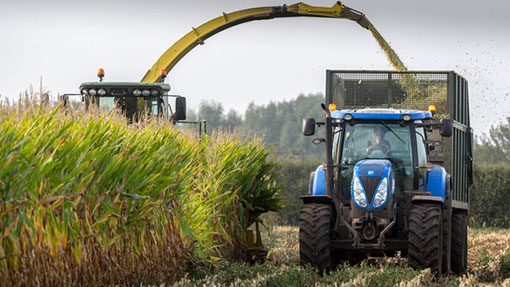Protect your soil on maize stubbles for fertiliser savings

Farmers are being advised to manage their maize stubble after harvest this year to avoid soil nutrient losses through leaching or run-off.
Recent wetter winters have put more pressure on maize stubbles, with last winter being one of the wettest in England and Wales. The South West, a key maize-growing area, was particularly affected by heavy rainfall and flooding.
Implementing measures can also save on fertiliser costs, with research showing about 40kg of nitrogen, worth £30/ha, could be retained if green cover is maintained during winter (assuming an ammonium nitrate price of £265/t).
See also: Why climate resilient farms make business sense
To reduce the risk of soil and water loss from maize fields, the Maize Growers Association (MGA) advises farmers to either establish a cover crop or roughly cultivate the area to maximise water and nutrient infiltration.
Farmers Weekly Dairy Farmer of the Year Hugh McClymont says after the excellent growing season this year, the crop is well forward allowing plenty of time to do something with the land.
“Those who’ve already harvested maize, look at your stubbles and assess what you have. You know your farm – pick the best fields and make them work hard to maximise the amount of DM/ha from the land.”
Last season, Mr McClymont followed the maize harvest with a chisel plough to leave the soil with an open structure.
December, January and February saw unprecedented rainfall, but even in these conditions, Mr McClymont saw significantly reduced soil loss, with no ponding or run-off on these fields.
“You get a lot of compaction with large wheeled tractors and heavy machinery [during maize harvest], but ploughing allowed the water to dissipate, not run into channels, ditches or onto roads, where it causes more problems.
“We followed the maize with spring beans, planted on 6 March. The benefits of ploughing before the very wet weather meant it dried out quickly, allowing us to get on the land early, plus we didn’t have to plough, just min-till, saving money.”
As ground conditions are still good and the soil is warm, Mr McClymont says cover crops such as cereals or Italian ryegrass could be useful to soak up nitrogen in the soil and will establish quickly.
“Planting a cover crop is a bit more costly, but you have to look at what you’ll get from it. It is possible to get two crops from one field in a season,” he added.
Driven by environmental factors, Mr McClymont also believes managing stubbles ticks this box. Previously his fields with gateways at the lower end had soil washing onto roads due to heavy compaction of these areas. However, introducing stubble management has put a stop to this.
“I didn’t want to be found causing the problem, so I did something to remove myself from the blame.
“Someday soon the weather will break and we will get rainfall, and we don’t know when it will stop. All farmers should consider some form of stubble management.”
MGA tips for stubble management
- Rotate maize with autumn-established crops such as winter cereals/crops or grass leys.
- Follow maize with an autumn-established cover crop which could be grazed, cut or incorporated in the spring before establishing next year’s maize crop.
- Roughly cultivate stubbles to be left uncropped.
Free advice and information is available to any maize grower. Call 01363 775 040 or visit the Maize Growers Association website
